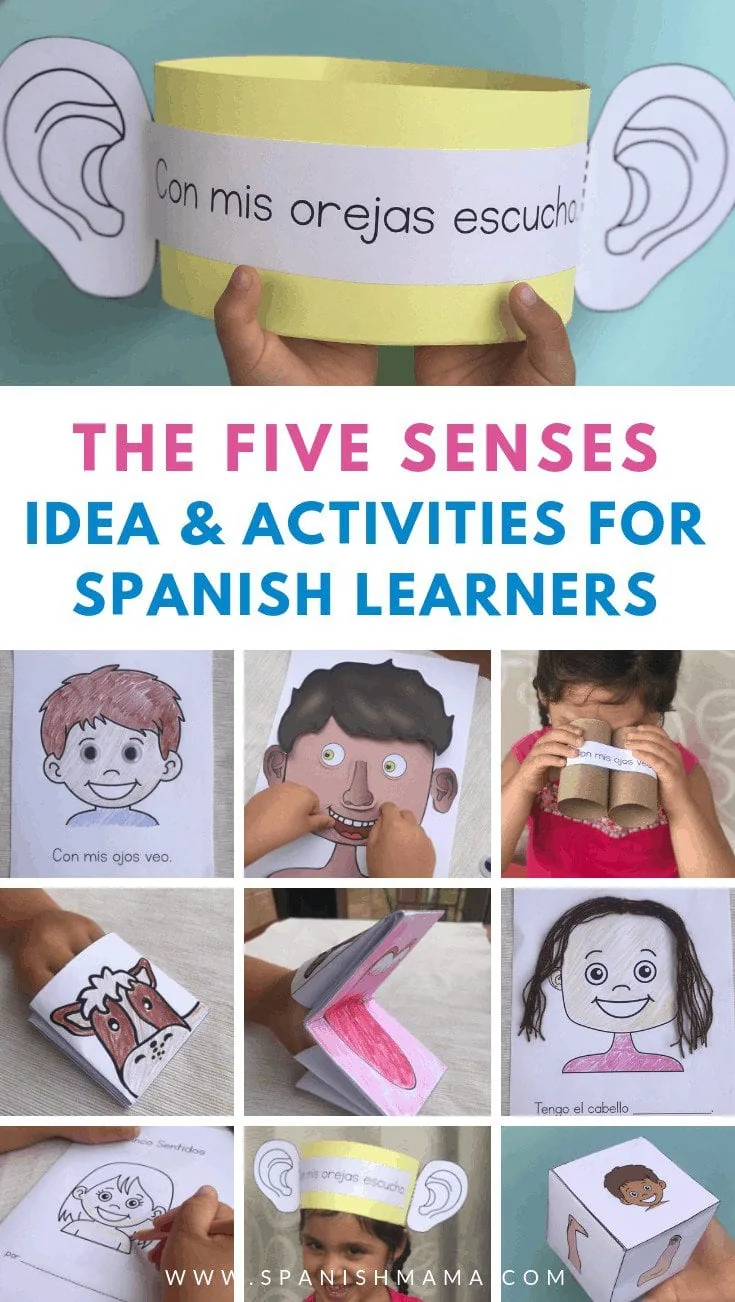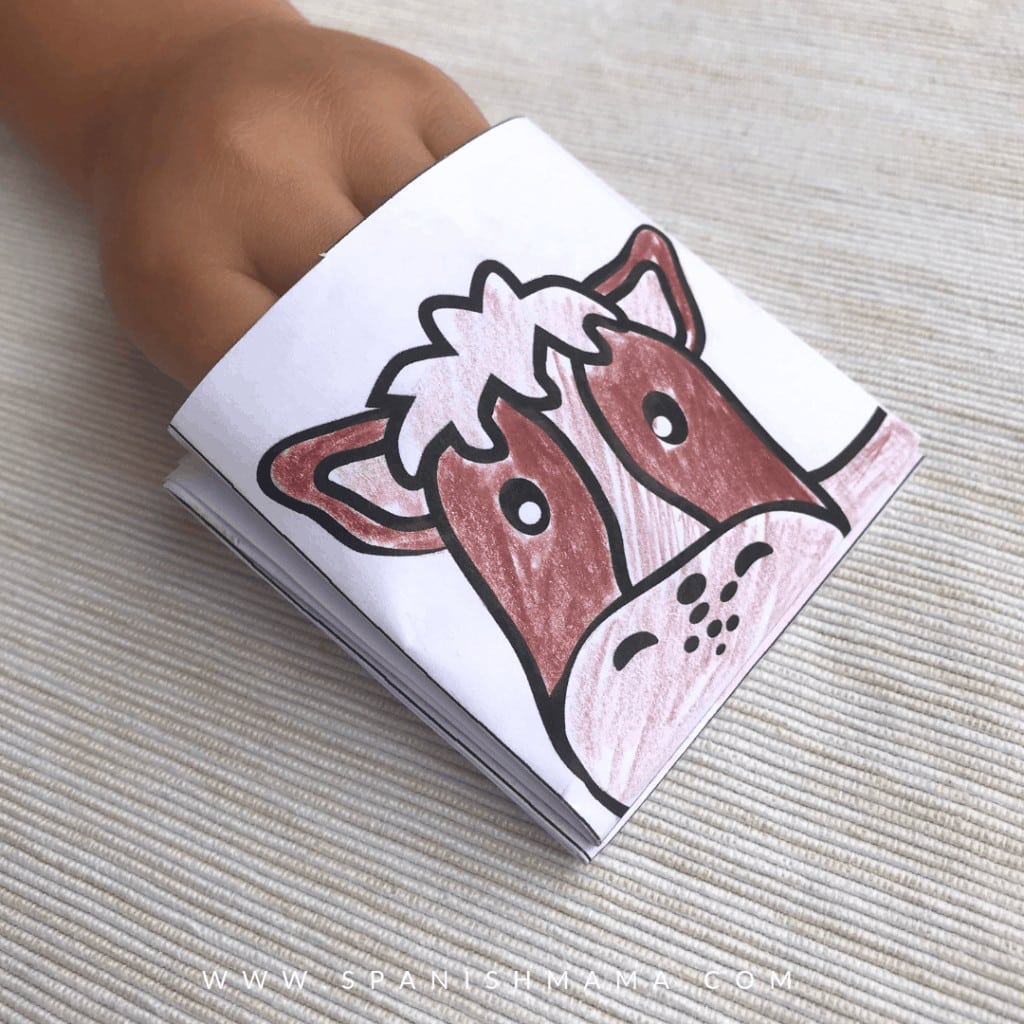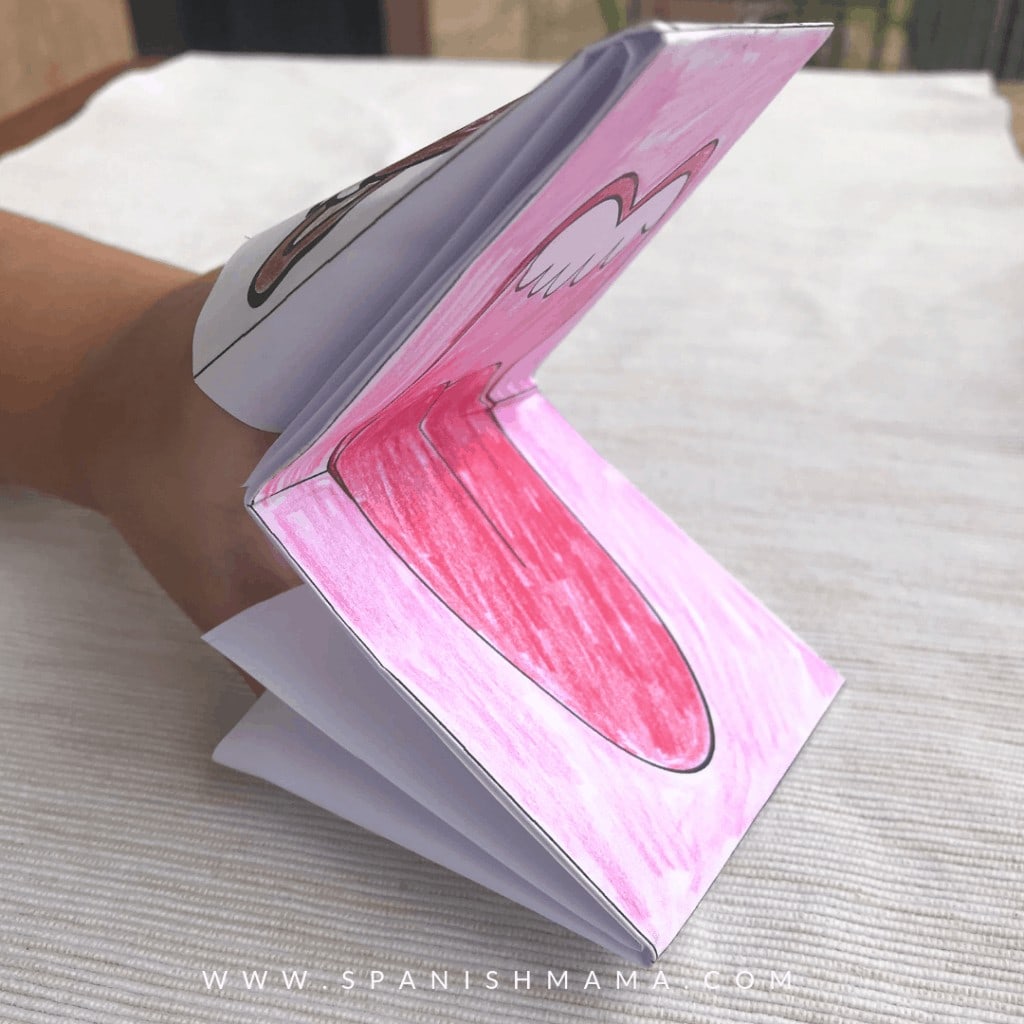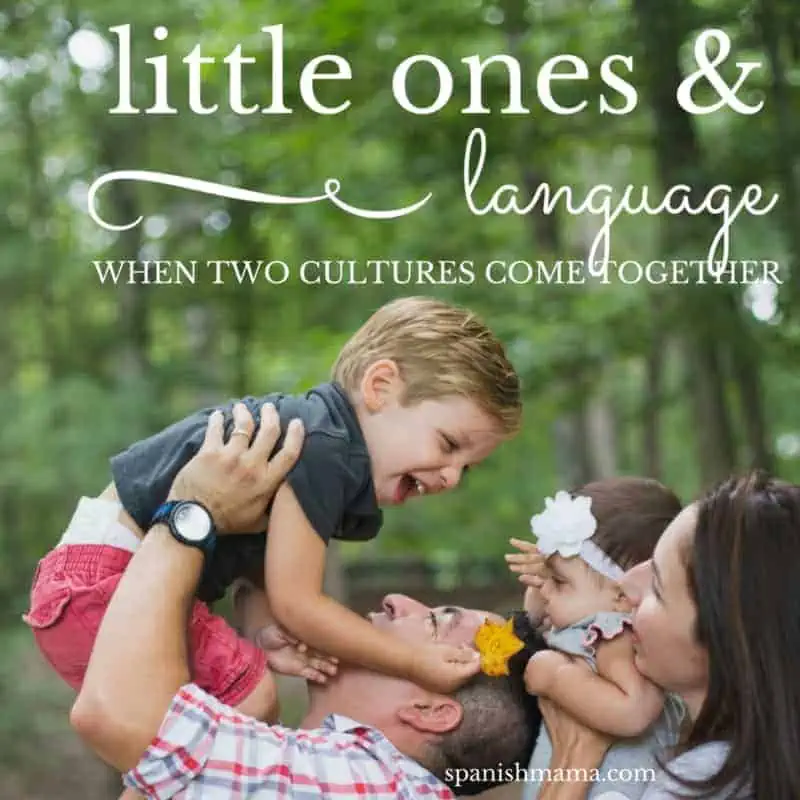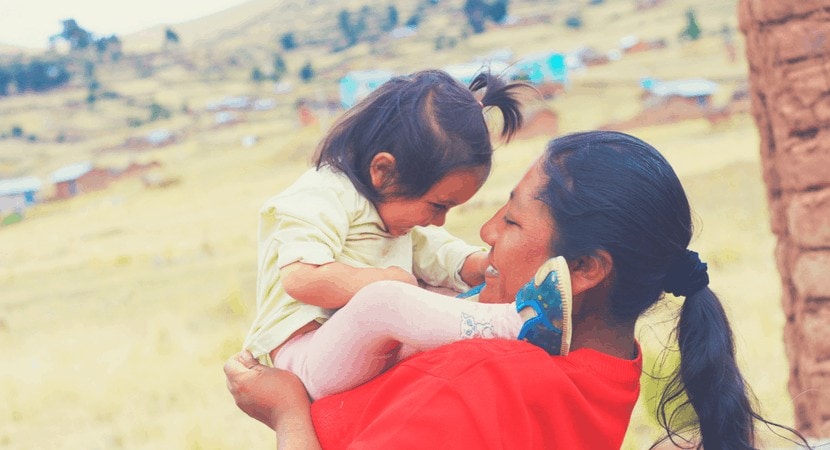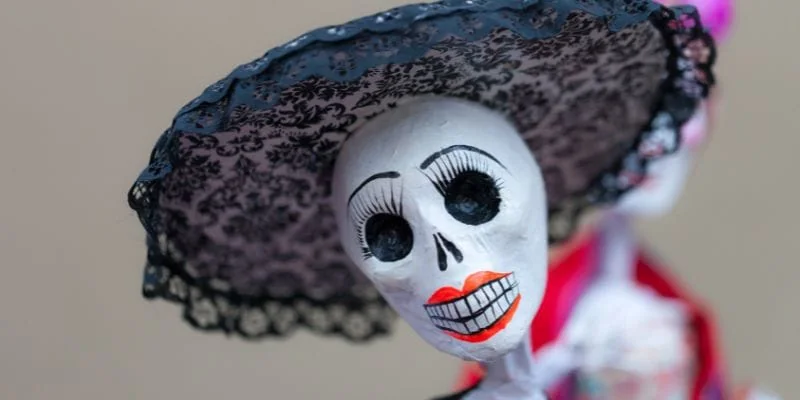5 Sentidos Activities for Kids Learning Spanish
Inside: 5 Sentidos para niños – teaching the five senses and parts of the face for kids.
Learning the five senses and parts of the face is one of my favorite lessons when teaching Spanish to kids. It’s so hands-on that you’re sure to have engaged students and lots of fun together!
In this post I’m sharing activities and ideas for each of the “5 sentidos.” We’ll start off with some general ideas for setting up the unit, and then do look at specific games and activities for each part of the face in Spanish.
I like to teach the part of the face, and the verb that goes with it: ojo and veo, or boca and hablo/como, for example. I recommend doing just one sense per class, so you can give your little Spanish learners lots of repetition and exposure to each part!

Personally, I teach the five sense in the context of a larger unit based on the classic children’s song “A Mi Burro, A Mi Burro,” or you can just choose the activities that work for you! If you love everything and want to grab ready-to-grab materials, you can purchase my A Mi Burro Unit 1. You’ll get all the printables referenced here, plus stories, PPTs, and more.
This post contains affiliate links. Thank you for your support!
5 SENTIDOS IDEAS & ACTIVITIES FOR KIDS
You can choose the terms in Spanish you want to use, but here are the terms I use.
la cabeza – head
los ojos – eyes
las orejas – ears
la boca – mouth
las manos – hands
la nariz – nose
el cabello – hair
los ojos – eyes
escucha, escucho – hears, I hear
habla, hablo – talks, I talk
come, como – eats, I eat
toca, toco – touches, touch
huele, huelo – smells, I smell
SETTING UP A PARTS OF THE FACE UNIT IN SPANISH
I like to print out a large outline of a head. Each lesson when we introduce a new part of the face, we attach it to the face until the whole thing is complete. Using a Mr. Potato head would be cute as well!
The song “Cabeza, Hombros, Rodillas, Pies” is a perfect way to introduce parts of the face, or with very little ones, the song “Mi Carita Redondita” is sweet as well. Obviously, get everyone up and doing motions as you sing! Here are some video options:
CABEZA, HOMBROS, RODILLAS, PIES CANCIONES
MI CARITA REDONDITA
TEACHING LOS OJOS IN SPANISH
You can introduce los ojos by talking about eye colors, if your students know their colors. It’s fun to do a little graph as well. Explain that veo means I see. To make this extra hands-on, you can use a set of real binoculars or do a craft with toilet paper tubes.

You can also do a craft that uses googly eyes:
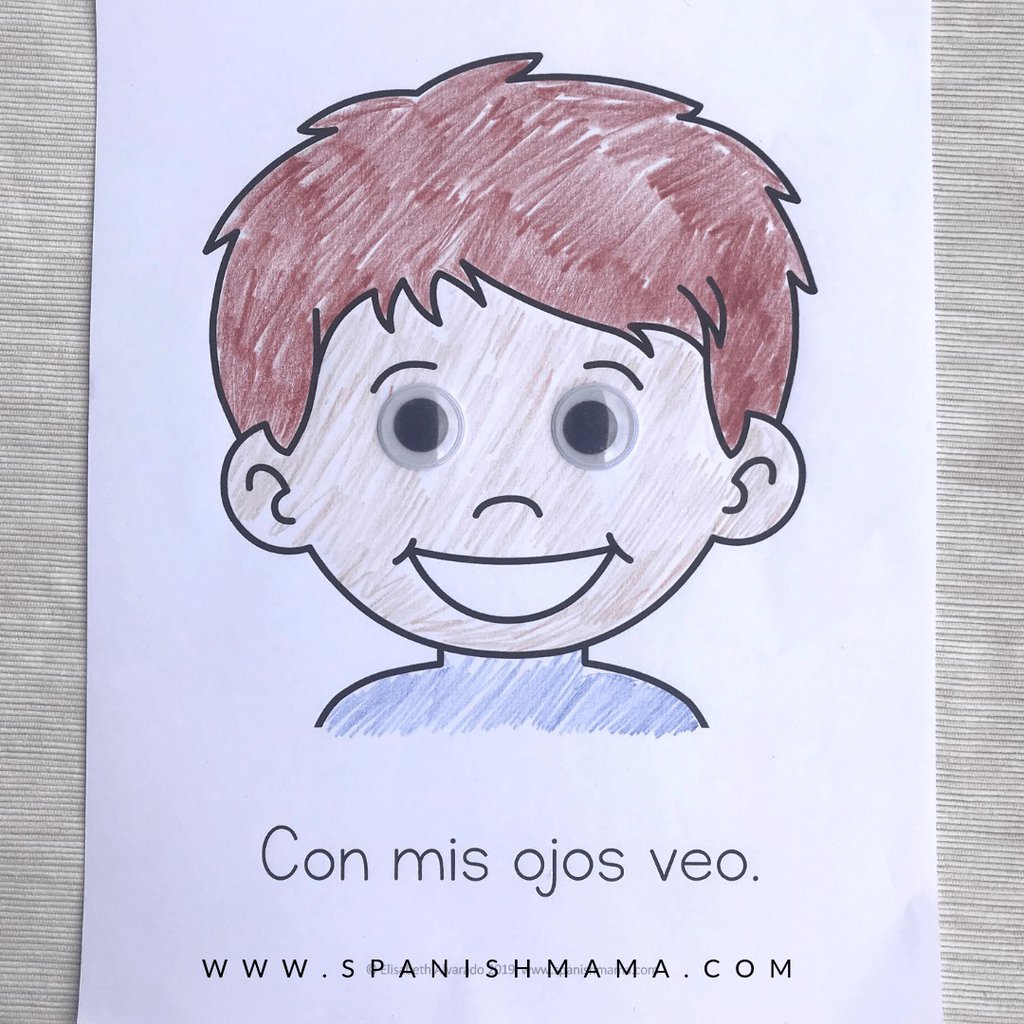
More ideas for teaching los ojos:
- Play “Veo, veo con mi ojito.” You can also play this by spotting colors around the room, or look at pictures in a book.
- Do some blindfolded games and activities, to talk about using our eyes. You can have the students try to do something blindfolded, like draw or build a tower with blocks.
- Read a book like Oso Pardo, Oso Pardo Eric Carle.
There are also some good videos that model saying “veo algo…” for kids, while reviewing the colors. You can try showing these before playing your “Veo veo con mi ojito” game. They are interactive, so be sure to pause and let your students try to spot things too.
VEO ALGO… CANCIONES
TEACHING LAS OREJAS IN SPANISH
As you introduce las orejas in Spanish, it’s fun to make hat with giant ears for the students to wear during the lesson. Explain that escucho means I hear or listen, which they will be doing lots of this class!

More ideas for las orejas:
- Do several listening activities. Play different animal sounds, and let the students use their ears to listen and guess what animals it is.
- If you have traditional instruments from Spanish-speaking countries, bring them in and listen to what sounds they make.
- Do a musical craft like maracas.
- Have the students sit in a circle. Blindfold one student (review los ojos!), and let another student ring a bell. The blindfolded student can guess who rang the bell.
TEACHING LA BOCA IN SPANISH
To learn about la boca Spanish, you can teach both como and hablo, for I eat and I talk. For habla, it’s really fun to make telephones using tins cans, and the students can take turns listening with their ears, and talking with their mouths. If you have a small group, it’s fun to play the game “Telephone” and pass a message in Spanish around the group.
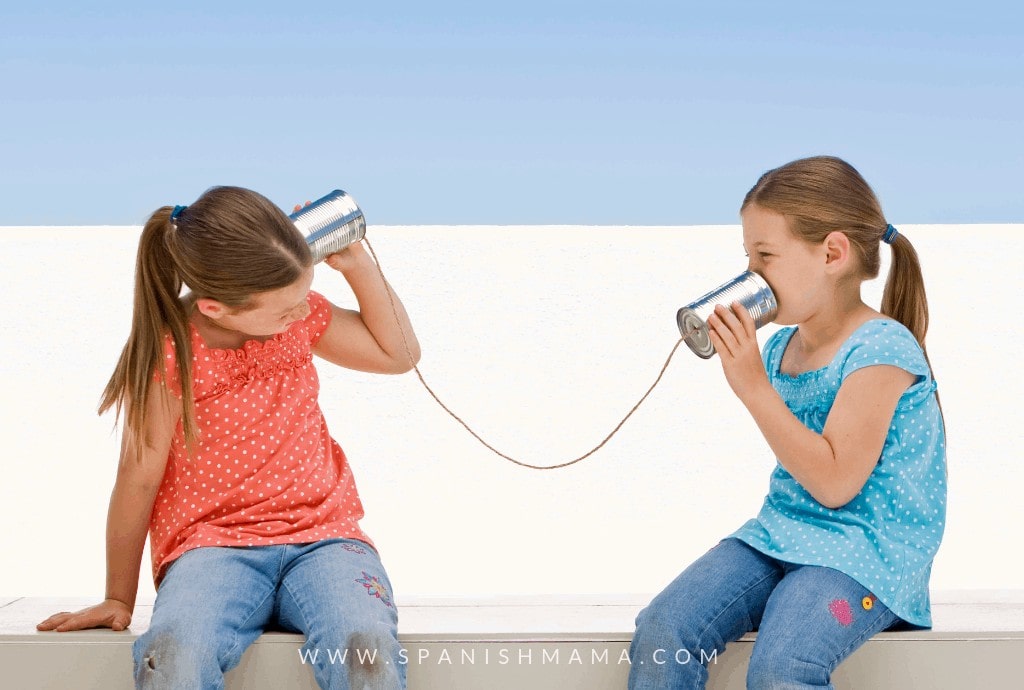
More ideas for la boca:
- As you are teaching habla, use your phone to record to your students saying a simple message in Spanish. (With video, so you can know who is who!) Then, play the message back to your students while they only listen. Ask them to guess which of their classmates is talking.
- If you can use food at school, bringing in some snacks is a fun way to teach la boca and come.
- Those of you doing these lessons at home could also cut up small pieces of food, having the kids close their eyes, and try to guess what foods they’re tasting while you ask “¿Qué comes?”
- For a fun take-home craft, I like to make puppets with big mouths for the students to hold and use.
TEACHING LAS MANOS IN SPANISH
For las manos, the simplest craft is simple tracing everyone’s hands and coloring them. This is always a hit with littles!
Another fun activity to teach toco is playing “What’s in the bag?” Gather familiar items they can name, in a bag or box. Let the students take turns putting their hands in and guessing the object just by feeling it.
The song “Saco una manito” goes well with this unit too!
SACO UNA MANITO
TEACHING LA NARIZ IN SPANISH
To teach la nariz and huelo, bring in some objects with a distinct smell. If you can’t think of things they would be able to name in Spanish, I’d let them name it in English and just start with ‘Huelo _____” as they use their noses to guess what smell it is. (Cinnamon, peppermint, lemon or orange, lavendar, cumin, soap, etc.). You can simply let them say if they like it or not (me gusta/no me gusta). Make sure to have them pinch their noses and try to smell, so they see how much they use their noses!
If you have access to essential oils, you can also create a two sets of bottles with a drop or two inside. (Put colored stickers on the bottom to know the answers.) Let the students try to match them just by smelling.
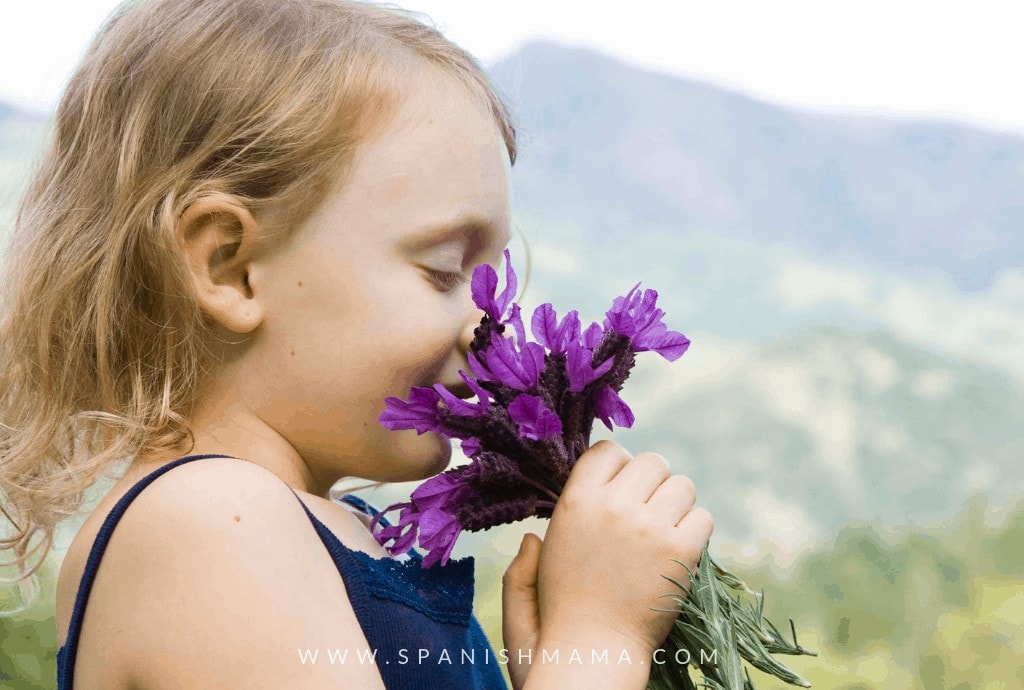
TEACHING EL CABELLO IN SPANISH
El cabello is obviously not part of the 5 sentidos, but it makes sense to teach it while teaching the parts of the face. It’s fun to do a craft that uses yarn for the hair, and bring in different colors. They can select a color that matches theirs, and glue into onto the head picture. If they have curly hair, you may have to show them how to twist it around and glue like that.
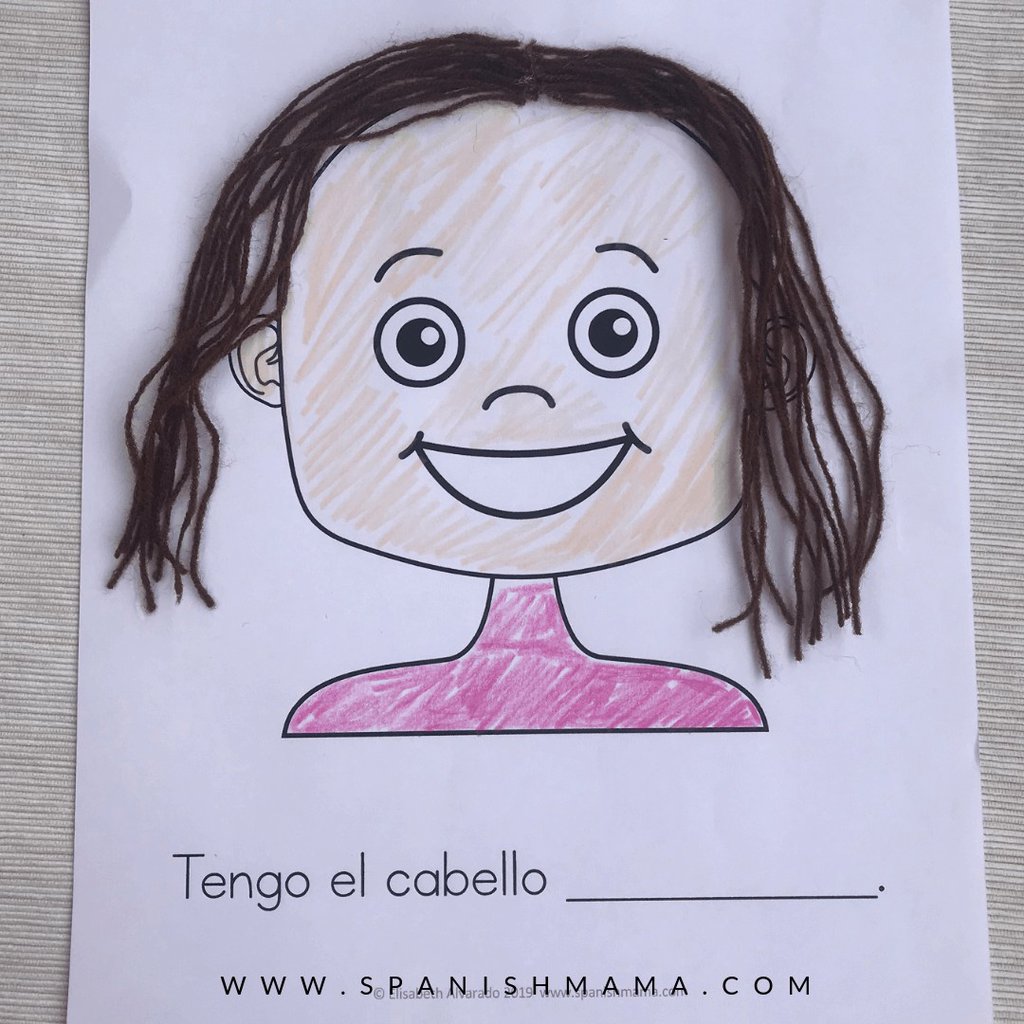
What other fun activities do you love for teaching los cinco sentidos to Spanish learners? Let me know in the comments below!
LIKE IT? PIN IT!
